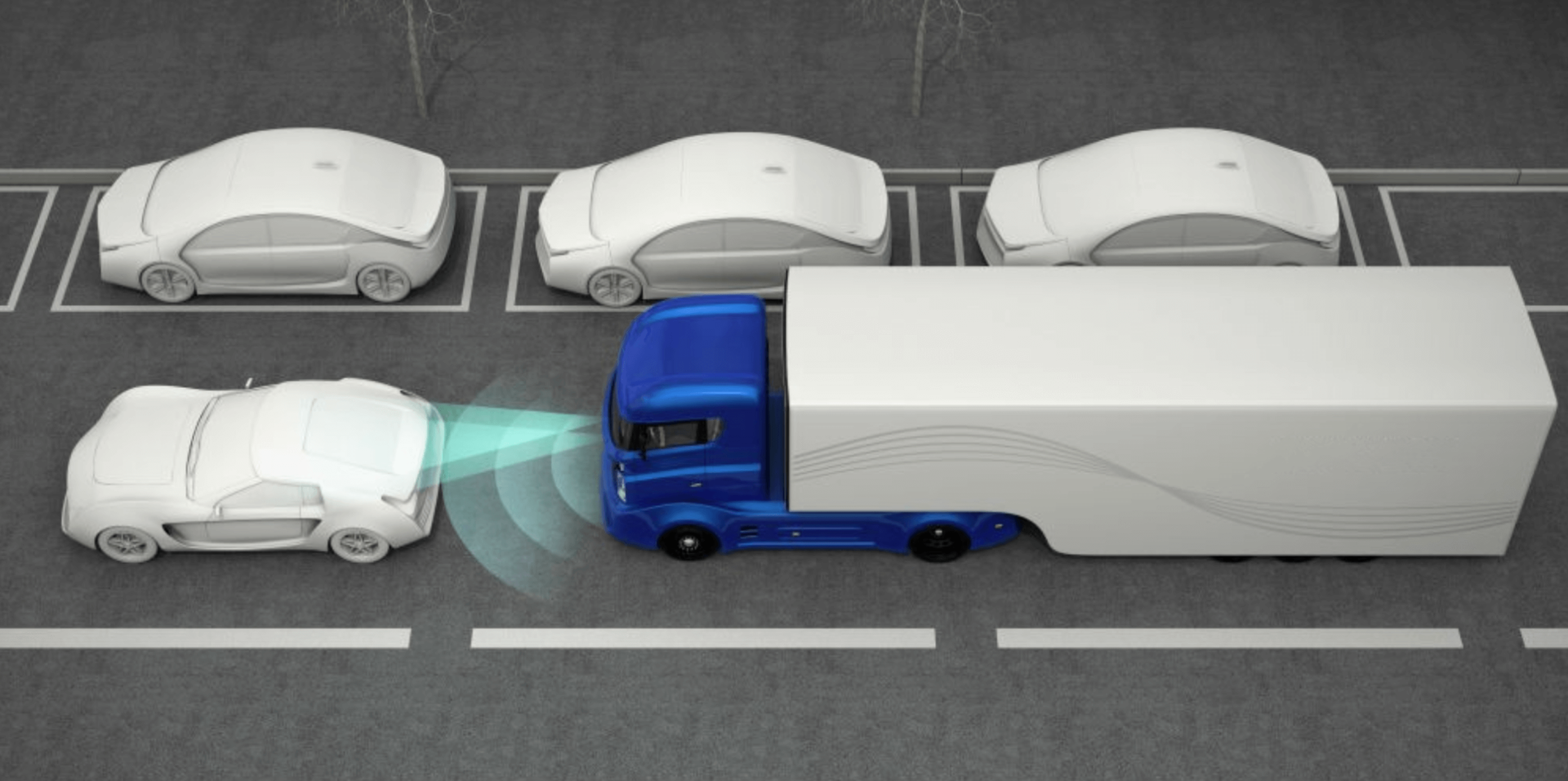TECHNOLOGY
How New Technological Innovations Will Benefit The Trucking Industry

The rapid development of technology has made digital tools an essential part of every trucking professional’s career.
New inventions make it possible for trucking companies to work more efficiently than ever before, even as global demand continues to put pressure on their industry. In this article, we’ll explore four of the incredible technologies that are set to make a big difference in the trucking industry and what their impact may look like.

1. AI-Based Data Analysis
As global trade continues to grow, many trucking companies are seeking new ways to eliminate bottlenecks, solve supply chain challenges, and increase productivity. Keeping the trucking industry running depends on their ability to optimize everything from routes to truck loads to employees’ schedules.
While human analysis can be error-prone, artificial intelligence (AI) can sort through massive data sets and identify trends in a matter of seconds and with precision. In the trucking industry, it can optimize capacity planning, worker conditions, and far more — all faster than a professional data analyst can.
Keeping an AI-based transportation management system (TMS) updated can go a long way to improving efficiency in trucking. When you input data into your TMS, it can help you streamline logistics for better route planning and shipping times. Training your employees to be comfortable and confident in using your TMS can further help you get even more out of this software.
2. IoT Sensors
The Internet of Things (IoT) is a network of physical objects that are connected to the internet — and it has a significant role to play in the modern trucking industry. Since trucks are still predominantly built with non-digital technologies, IoT devices are essential for modernizing and advancing the industry without completely uprooting the freight vehicles currently on the road.
IoT sensors, which can help monitor trucks on the road, offer notable benefits for trucking companies. By providing real-time data related to location, temperature, tire pressure, and even energy usage, IoT sensors can help with organizational sustainability efforts. Not only can this help reduce the environmental impact of trucking, but it can also improve safety on the roads and provide a boost to your company’s efficiency.
Challenges associated with managing hazardous materials, like spilling and proper handling, can also be addressed with the implementation of IoT sensors. While accurate labeling, protective equipment, and proper training are the primary safety precautions in place today, IoT sensors can add an extra layer of safety by notifying truckers of spills or contamination as soon as they occur. And though the increased use of IoT devices poses certain risks, you can protect your company by choosing devices that encrypt your data.
3. Digital Upskilling
The more technology advances, the more important upskilling becomes. Truck technicians, drivers, and warehouse staff all need to be comfortable with new technologies to work successfully in the modern trucking industry. While technological developments have increased the number of skills that trucking professionals need to learn, it has also made the learning process easier in many ways.
Upskilling software like Degreed and Learning Pool allows you to deliver the tools and information that employees need to learn remotely. You no longer need a dedicated teacher to run training in-person sessions. Employees can learn new skills wherever they’re currently stationed. Many upskilling platforms can even provide data about the progress of your team, so you always know where everyone’s at.
Truck driving simulators, which are advancing every year, can help employees (especially new hires) practice new driving skills before they take them on the road.
4. Autonomous Trucks
Advancements in driverless technologies have been making headlines for years and companies are slowly getting closer to deploying fully autonomous trucks on the road. It’s now a matter of “when,” not “if” — and that’s great news for the trucking industry.
As autonomous vehicles become commonplace, trucking companies can operate around the clock, even during the hours that truckers normally rest. Autonomous trucks can also accurately select the best routes to get to their destinations, and even the best lanes to travel in. This enhances safety, reduces the chance of human error, and bolsters productivity.
The transition to autonomous trucks naturally sparks fears about massive job loss. However, complete automation is still years away. During this time, upskilling technologies can help drivers prepare to transition from sitting behind the wheel to managing fleets and automation systems.
Entering the Next Phase of the Trucking Industry
The trucking industry is a core part of the American economy that must function effectively to keep supply chains intact. As global commerce and e-commerce continue to grow, technological developments in the industry may be key to alleviating the pressures of rising demand.
Using AI-based data analytics and IoT sensors, trucking companies can operate more efficiently and safely, while making more accurate decisions. Autonomous trucks, when they become widespread, will further increase productivity and reduce human error. While these technologies do have the potential to displace trucking professionals, digital upskilling technologies can support their transition into higher-level positions so employees can continue contributing to the trucking industry.
Source link
TECHNOLOGY
Next-gen chips, Amazon Q, and speedy S3

AWS re:Invent, which has been taking place from November 27 and runs to December 1, has had its usual plethora of announcements: a total of 21 at time of print.
Perhaps not surprisingly, given the huge potential impact of generative AI – ChatGPT officially turns one year old today – a lot of focus has been on the AI side for AWS’ announcements, including a major partnership inked with NVIDIA across infrastructure, software, and services.
Yet there has been plenty more announced at the Las Vegas jamboree besides. Here, CloudTech rounds up the best of the rest:
Next-generation chips
This was the other major AI-focused announcement at re:Invent: the launch of two new chips, AWS Graviton4 and AWS Trainium2, for training and running AI and machine learning (ML) models, among other customer workloads. Graviton4 shapes up against its predecessor with 30% better compute performance, 50% more cores and 75% more memory bandwidth, while Trainium2 delivers up to four times faster training than before and will be able to be deployed in EC2 UltraClusters of up to 100,000 chips.
The EC2 UltraClusters are designed to ‘deliver the highest performance, most energy efficient AI model training infrastructure in the cloud’, as AWS puts it. With it, customers will be able to train large language models in ‘a fraction of the time’, as well as double energy efficiency.
As ever, AWS offers customers who are already utilising these tools. Databricks, Epic and SAP are among the companies cited as using the new AWS-designed chips.
Zero-ETL integrations
AWS announced new Amazon Aurora PostgreSQL, Amazon DynamoDB, and Amazon Relational Database Services (Amazon RDS) for MySQL integrations with Amazon Redshift, AWS’ cloud data warehouse. The zero-ETL integrations – eliminating the need to build ETL (extract, transform, load) data pipelines – make it easier to connect and analyse transactional data across various relational and non-relational databases in Amazon Redshift.
A simple example of how zero-ETL functions can be seen is in a hypothetical company which stores transactional data – time of transaction, items bought, where the transaction occurred – in a relational database, but use another analytics tool to analyse data in a non-relational database. To connect it all up, companies would previously have to construct ETL data pipelines which are a time and money sink.
The latest integrations “build on AWS’s zero-ETL foundation… so customers can quickly and easily connect all of their data, no matter where it lives,” the company said.
Amazon S3 Express One Zone
AWS announced the general availability of Amazon S3 Express One Zone, a new storage class purpose-built for customers’ most frequently-accessed data. Data access speed is up to 10 times faster and request costs up to 50% lower than standard S3. Companies can also opt to collocate their Amazon S3 Express One Zone data in the same availability zone as their compute resources.
Companies and partners who are using Amazon S3 Express One Zone include ChaosSearch, Cloudera, and Pinterest.
Amazon Q
A new product, and an interesting pivot, again with generative AI at its core. Amazon Q was announced as a ‘new type of generative AI-powered assistant’ which can be tailored to a customer’s business. “Customers can get fast, relevant answers to pressing questions, generate content, and take actions – all informed by a customer’s information repositories, code, and enterprise systems,” AWS added. The service also can assist companies building on AWS, as well as companies using AWS applications for business intelligence, contact centres, and supply chain management.
Customers cited as early adopters include Accenture, BMW and Wunderkind.
Want to learn more about cybersecurity and the cloud from industry leaders? Check out Cyber Security & Cloud Expo taking place in Amsterdam, California, and London. Explore other upcoming enterprise technology events and webinars powered by TechForge here.
TECHNOLOGY
HCLTech and Cisco create collaborative hybrid workplaces

Digital comms specialist Cisco and global tech firm HCLTech have teamed up to launch Meeting-Rooms-as-a-Service (MRaaS).
Available on a subscription model, this solution modernises legacy meeting rooms and enables users to join meetings from any meeting solution provider using Webex devices.
The MRaaS solution helps enterprises simplify the design, implementation and maintenance of integrated meeting rooms, enabling seamless collaboration for their globally distributed hybrid workforces.
Rakshit Ghura, senior VP and Global head of digital workplace services, HCLTech, said: “MRaaS combines our consulting and managed services expertise with Cisco’s proficiency in Webex devices to change the way employees conceptualise, organise and interact in a collaborative environment for a modern hybrid work model.
“The common vision of our partnership is to elevate the collaboration experience at work and drive productivity through modern meeting rooms.”
Alexandra Zagury, VP of partner managed and as-a-Service Sales at Cisco, said: “Our partnership with HCLTech helps our clients transform their offices through cost-effective managed services that support the ongoing evolution of workspaces.
“As we reimagine the modern office, we are making it easier to support collaboration and productivity among workers, whether they are in the office or elsewhere.”
Cisco’s Webex collaboration devices harness the power of artificial intelligence to offer intuitive, seamless collaboration experiences, enabling meeting rooms with smart features such as meeting zones, intelligent people framing, optimised attendee audio and background noise removal, among others.
Want to learn more about cybersecurity and the cloud from industry leaders? Check out Cyber Security & Cloud Expo taking place in Amsterdam, California, and London. Explore other upcoming enterprise technology events and webinars powered by TechForge here.
TECHNOLOGY
Canonical releases low-touch private cloud MicroCloud

Canonical has announced the general availability of MicroCloud, a low-touch, open source cloud solution. MicroCloud is part of Canonical’s growing cloud infrastructure portfolio.
It is purpose-built for scalable clusters and edge deployments for all types of enterprises. It is designed with simplicity, security and automation in mind, minimising the time and effort to both deploy and maintain it. Conveniently, enterprise support for MicroCloud is offered as part of Canonical’s Ubuntu Pro subscription, with several support tiers available, and priced per node.
MicroClouds are optimised for repeatable and reliable remote deployments. A single command initiates the orchestration and clustering of various components with minimal involvement by the user, resulting in a fully functional cloud within minutes. This simplified deployment process significantly reduces the barrier to entry, putting a production-grade cloud at everyone’s fingertips.
Juan Manuel Ventura, head of architectures & technologies at Spindox, said: “Cloud computing is not only about technology, it’s the beating heart of any modern industrial transformation, driving agility and innovation. Our mission is to provide our customers with the most effective ways to innovate and bring value; having a complexity-free cloud infrastructure is one important piece of that puzzle. With MicroCloud, the focus shifts away from struggling with cloud operations to solving real business challenges” says
In addition to seamless deployment, MicroCloud prioritises security and ease of maintenance. All MicroCloud components are built with strict confinement for increased security, with over-the-air transactional updates that preserve data and roll back on errors automatically. Upgrades to newer versions are handled automatically and without downtime, with the mechanisms to hold or schedule them as needed.
With this approach, MicroCloud caters to both on-premise clouds but also edge deployments at remote locations, allowing organisations to use the same infrastructure primitives and services wherever they are needed. It is suitable for business-in-branch office locations or industrial use inside a factory, as well as distributed locations where the focus is on replicability and unattended operations.
Cedric Gegout, VP of product at Canonical, said: “As data becomes more distributed, the infrastructure has to follow. Cloud computing is now distributed, spanning across data centres, far and near edge computing appliances. MicroCloud is our answer to that.
“By packaging known infrastructure primitives in a portable and unattended way, we are delivering a simpler, more prescriptive cloud experience that makes zero-ops a reality for many Industries.“
MicroCloud’s lightweight architecture makes it usable on both commodity and high-end hardware, with several ways to further reduce its footprint depending on your workload needs. In addition to the standard Ubuntu Server or Desktop, MicroClouds can be run on Ubuntu Core – a lightweight OS optimised for the edge. With Ubuntu Core, MicroClouds are a perfect solution for far-edge locations with limited computing capabilities. Users can choose to run their workloads using Kubernetes or via system containers. System containers based on LXD behave similarly to traditional VMs but consume fewer resources while providing bare-metal performance.
Coupled with Canonical’s Ubuntu Pro + Support subscription, MicroCloud users can benefit from an enterprise-grade open source cloud solution that is fully supported and with better economics. An Ubuntu Pro subscription offers security maintenance for the broadest collection of open-source software available from a single vendor today. It covers over 30k packages with a consistent security maintenance commitment, and additional features such as kernel livepatch, systems management at scale, certified compliance and hardening profiles enabling easy adoption for enterprises. With per-node pricing and no hidden fees, customers can rest assured that their environment is secure and supported without the expensive price tag typically associated with cloud solutions.
Want to learn more about cybersecurity and the cloud from industry leaders? Check out Cyber Security & Cloud Expo taking place in Amsterdam, California, and London. Explore other upcoming enterprise technology events and webinars powered by TechForge here.
-

 SEARCHENGINES6 days ago
SEARCHENGINES6 days agoGoogle Core Update Volatility, Helpful Content Update Gone, Dangerous Google Search Results & Google Ads Confusion
-

 SEO6 days ago
SEO6 days ago10 Paid Search & PPC Planning Best Practices
-

 MARKETING7 days ago
MARKETING7 days ago2 Ways to Take Back the Power in Your Business: Part 2
-

 MARKETING5 days ago
MARKETING5 days ago5 Psychological Tactics to Write Better Emails
-

 SEARCHENGINES5 days ago
SEARCHENGINES5 days agoWeekend Google Core Ranking Volatility
-

 MARKETING6 days ago
MARKETING6 days agoThe power of program management in martech
-

 PPC7 days ago
PPC7 days agoCritical Display Error in Brand Safety Metrics On Twitter/X Corrected
-

 SEO6 days ago
SEO6 days agoWordPress Releases A Performance Plugin For “Near-Instant Load Times”









![Amazon Trends & Industry Predictions for Sellers [2024] Amazon Trends & Industry Predictions for Sellers [2024]](https://articles.entireweb.com/wp-content/uploads/2024/01/Amazon-Trends-Industry-Predictions-for-Sellers-2024.webp-400x240.webp)
![Amazon Trends & Industry Predictions for Sellers [2024] Amazon Trends & Industry Predictions for Sellers [2024]](https://articles.entireweb.com/wp-content/uploads/2024/01/Amazon-Trends-Industry-Predictions-for-Sellers-2024.webp-80x80.webp)



You must be logged in to post a comment Login